Not to toot our own horn, but as a species, humans have made some pretty incredible things. You wouldn’t be reading this if we weren’t capable of producing incredible achievements in technology that allow us to explore the rest world from the comfort of home. But sometimes all it takes is one awe-inspiring view of that outside world to remember that Mother Nature is the ultimate creator.
Let’s try, as best we can, to do justice to 7 of those natural wonders from around the globe that words fail to describe. These are just a handful of the jaw-droppers and life-changers that should be on any traveller’s bucket list.
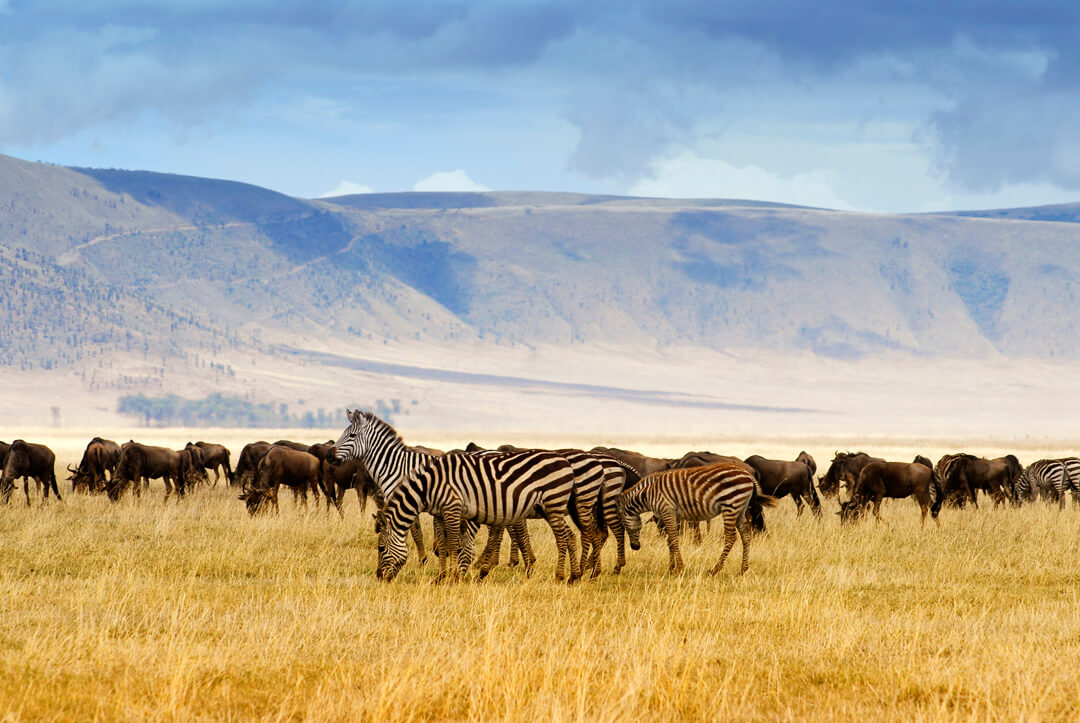
1. Ngorongoro Crater of Tanzania
Resting in the Northeastern corner of Tanzania is one of nature’s most popular potholes: the Ngorongoro Crater. Spanning as far as 12 miles wide, this “crater” is really a caldera, which forms when a volcano collapses in on itself like a failed souffle…one that was baking at over 1000 °C.
From this geological devastation arose a bustling hotspot of African wildlife, one spread across open grasslands and tall forests. The Ngorongoro Crater plays host to lion prides, herds of zebras and wildebeests, and more than 500,000 tourists every year. The crater’s staggering beauty and biodiversity makeup a large part of the Ngorongoro Conservation Area, a protected UNESCO World Heritage Site.
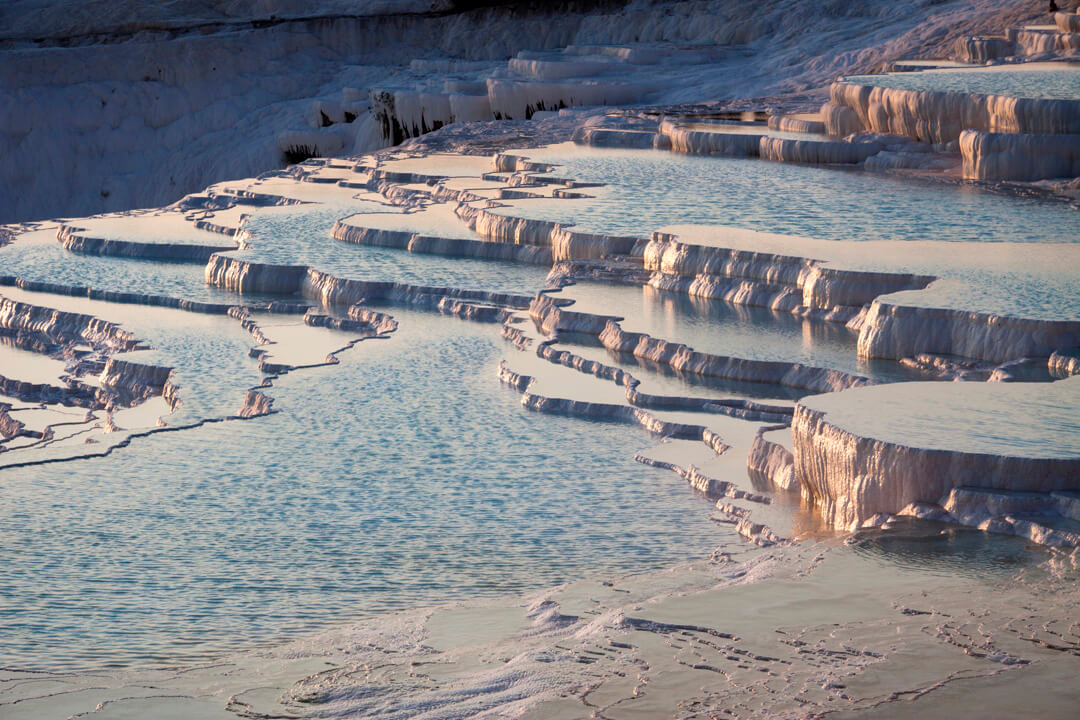
2. Pamukkale of Turkey
Turkey’s Aegean coast is a popular destination for beachgoers, but those willing to venture a few hours inland can treat themselves to the relaxing sights and soothing waters of the Pamukkale Thermal Pools. Clear, blue waters from nearby mineral springs converge in limestone basins, which are overlooked by imposing white terraces made of travertine. This stark backdrop for a relaxing soak is how the area earned the name Pamukkale, which translates as “cotton castle” in Turkish.
Recognized as a World Heritage Site in 1988, these pools have attracted visitors since the time of the Ancient Greeks, and some believe the waters of Pamukkale to have healing properties. History buffs will want to make time to explore the nearby ruins of the Greek city of Hierapolis – after they’ve pruned up in a hot water spring, of course.
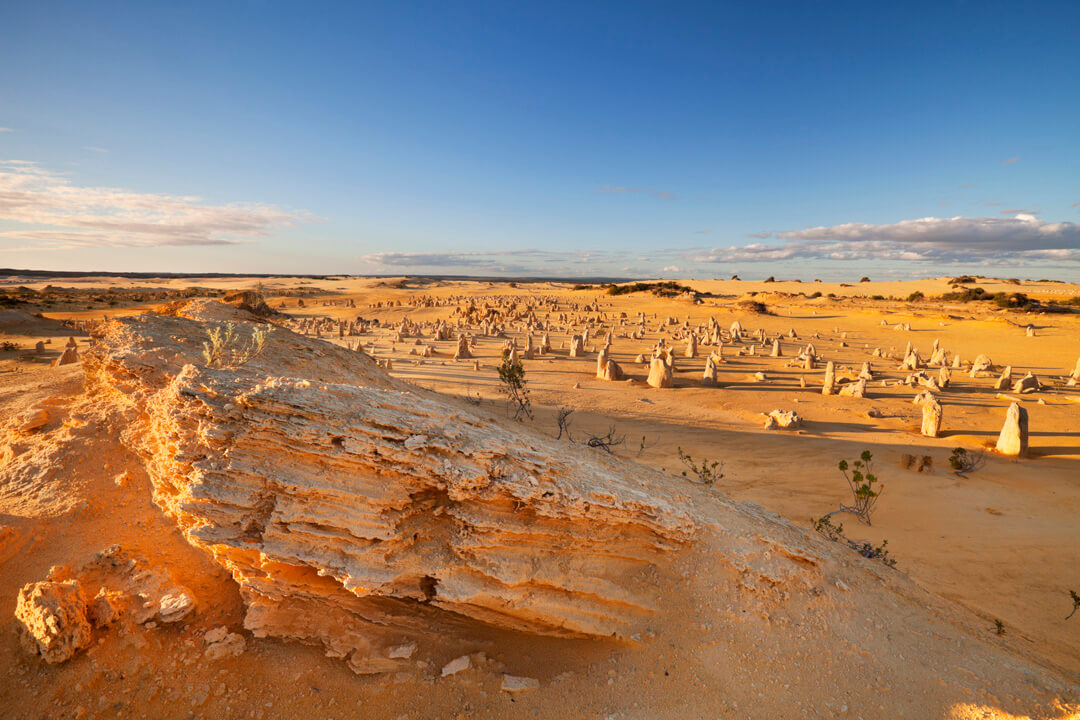
3. The Pinnacles of West Australia
Just off the coast of Western Australia, deep in the heart of Nambung National Park, sits a mystery made of sand and stone. Beguiling limestone structures, collectively called The Pinnacles, surge up from the earth below. They number in the thousands, and these weathered columns, ranging in size from a few inches to several metres tall, riddle a stretch of desert that was largely ignored by human visitors until recently.
Now incorporated as part of Nambung National Park, the Pinnacles have caught the attention of researchers debating the origins of these unique formations, tourists enthralled by the mystery of the Pinnacles, and local kangaroos looking to enjoy a nice bit of shade.
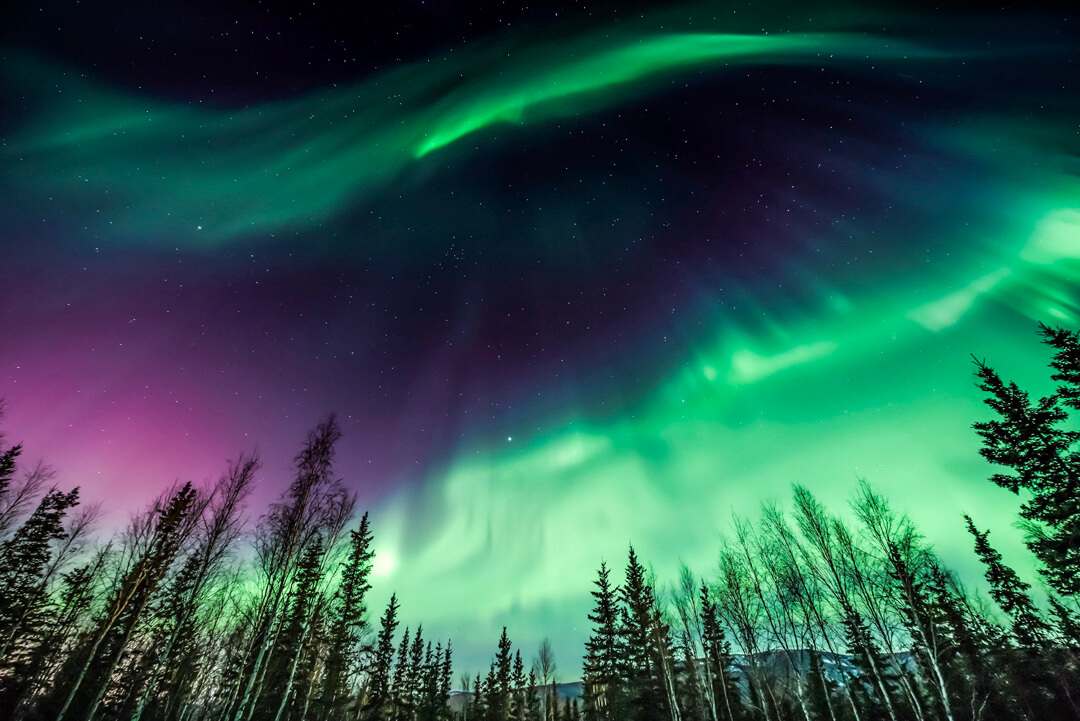
4. Northern Lights of Alaska
What is perhaps nature’s most spectacular sight is also one of its most widely shared. Aurora borealis, commonly referred to as the northern lights, can be seen streaming across the night sky as far south as Louisiana…if you’re lucky. The geographic area under which the lights can be seen is always moving, but those at higher latitudes will improve their chances of experiencing this shimmering, colourful phenomenon.
Fairbanks, Alaska has become a popular destination for would-be aurora borealis watchers; it’s estimated that you’ll have a greater than 90% chance of seeing the lights if you spend a minimum of three nights in Fairbanks during its aurora season (August 21-April 21). Just be sure to pack extra layers and a full thermos of coffee; auroras are best seen at the darkest hours of night, far away from any sources of light pollution.
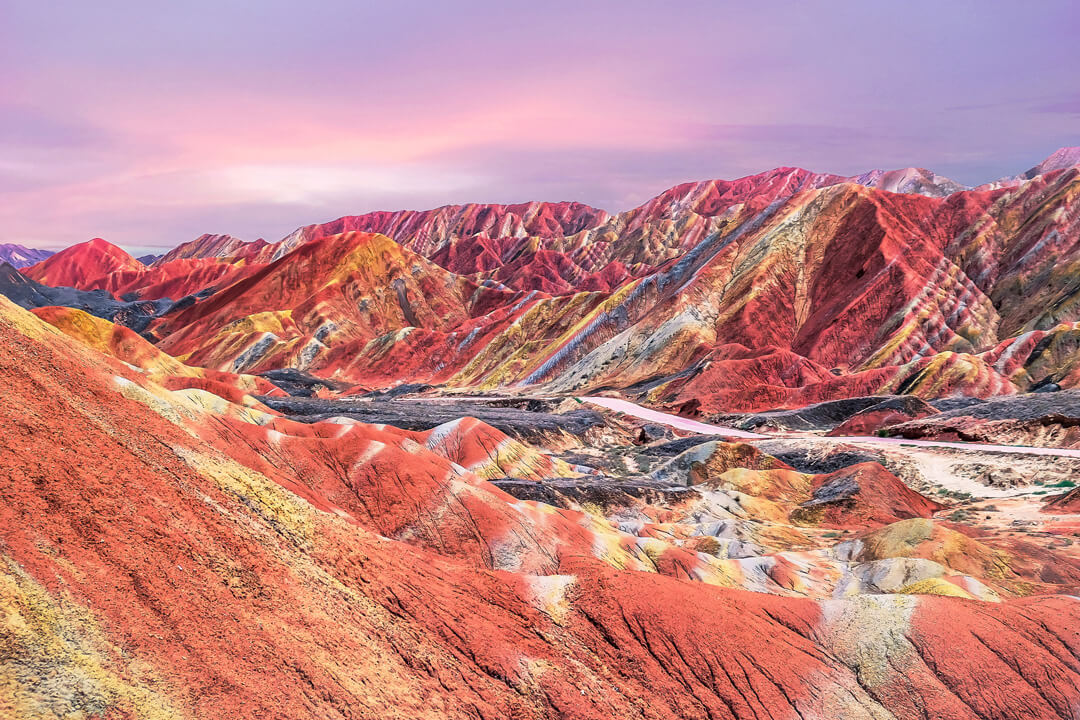
5. Rainbow Mountains of China
If someone from the city of Zhangye asks if you can paint with all the colours of the mountains, it’s not a misheard Disney lyric – it’s a challenge. Zhangye National Geopark’s main attraction, the Rainbow Mountains are among the most vibrant rock formations on Earth. You’ll find mile-long canvases of rusty red sandstone that’s striped with the yellows, greens and blues of oxidizing minerals.
One can easily lose a day hopping between the viewing platforms at this popular World Heritage Site, and it’s a top tourist attraction in the region. You may even wish for rainy weather, as water falling on the mountains only deepens their candy-coated appearance.
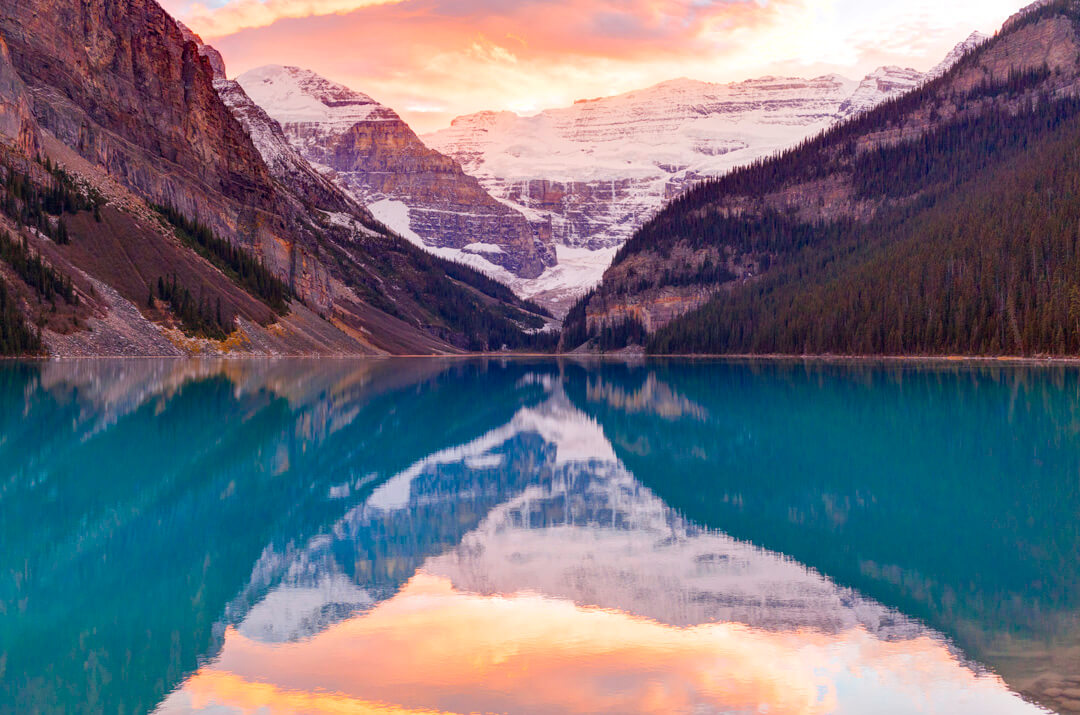
6. Lakes of Canada
You didn’t think we’d forget about our own backyard, did you? Canadians take pride in many of our natural wonders, but none are so widely available as our lakes. A recent survey suggests there are as many as 2,000,000 lakes in Canada. Combined with our rivers, these lakes contain enough liquid to flood the entire country in over 2 metres of fresh water!
Travellers to Canada will be spoiled for choice no matter what province or territory they visit (for tips on getting Canadian visas and travel insurance, check out our handy guide). Whether you’re jumping in the glacier waters of Joffre Lakes, hiking the surrounding trails of Lake Louise, or SUPing by the massive cottages of Muskoka Lakes, Canada’s lakes are sure to leave you speechless.
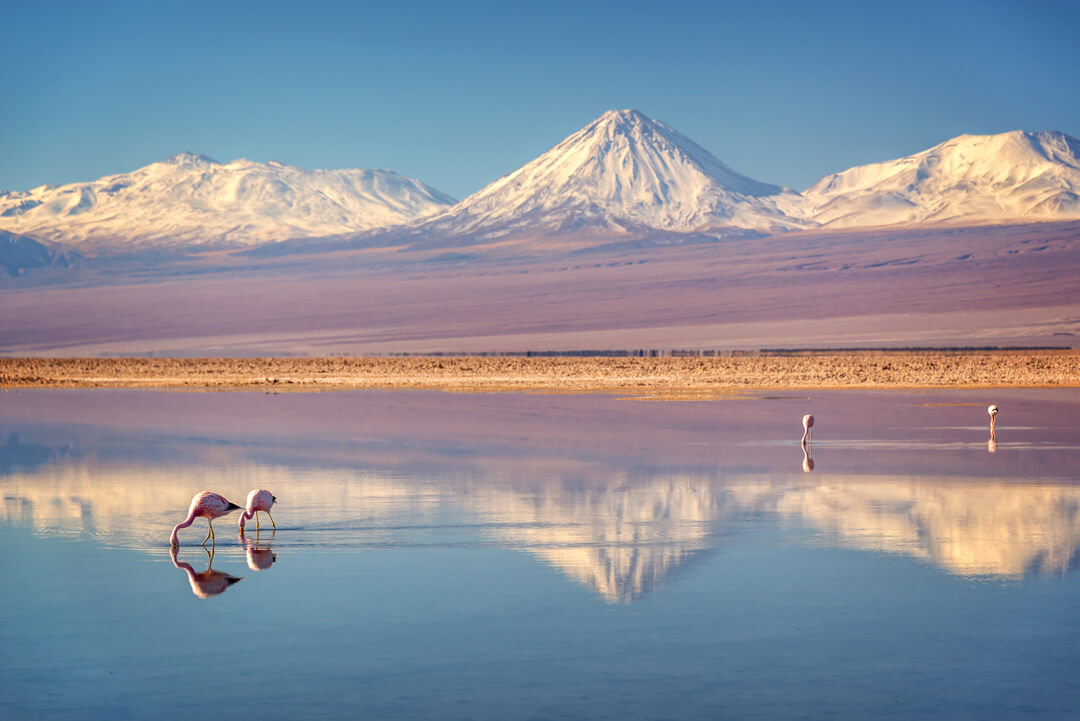
7. Salar de Atacama of Chile
We’ve already touched on some cool mountains, deserts and lakes, but what about a place where you can find all three? Sandwiched between two ranges of the Andes lies the 60-mile-long, 50-mile-wide Salar de Atacama, Chile’s largest salt flat. Peppered with active volcanoes and sitting at an elevation of 2,300 m above sea level, Salar de Atacama can seem intimidating on paper.
But the pastel colours of the sweeping flats speak to the quiet beauty of Salar de Atacama. You can watch Andean flamingoes dip their beaks into shallow lagoons, or have yourself a relaxing bob in sink hole lakes as buoyant as the Dead Sea. And those wishing to see green can make their way to the Toconares canyon, where fertile fruit orchards thrive within the canyon’s unique microclimate.
Our words and pictures can only do so much to capture the majesty of these wonders, which is all the more reason for you to get out there and see these sights for yourself. For tips on how to make shareable memories of your visit, be sure to consult our Traveller’s Guide to Travel Photography.
Happy travels,
Sam
Tell us in the comments below about your favourite nature spots that made you go “oooh,” “aaah,” and “OMG!”
